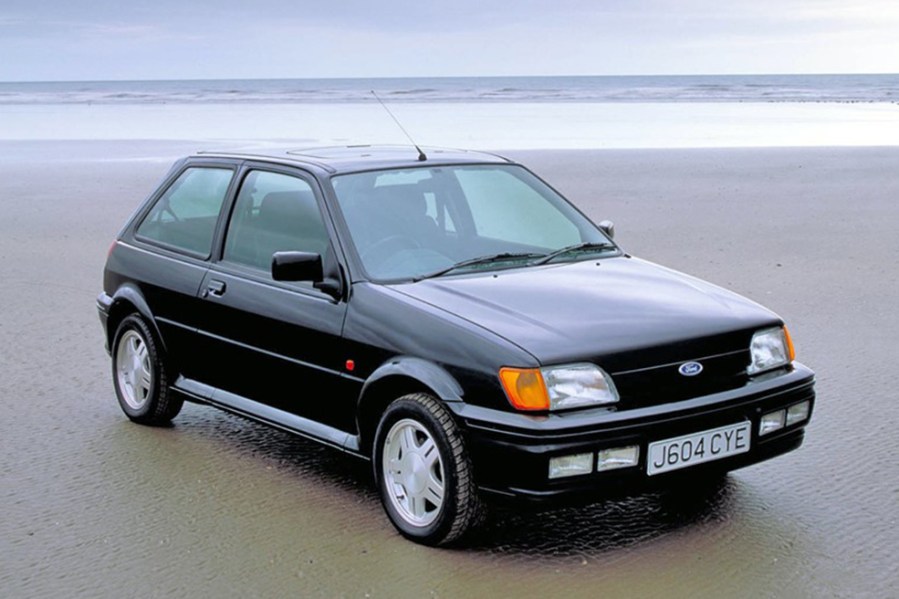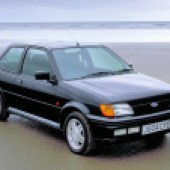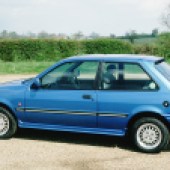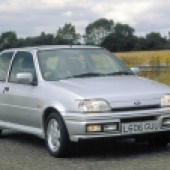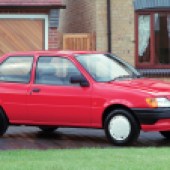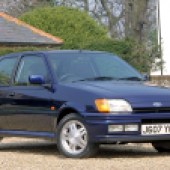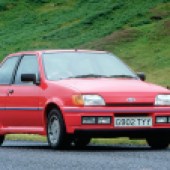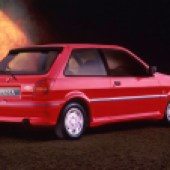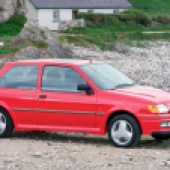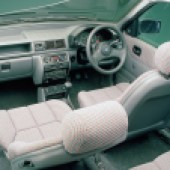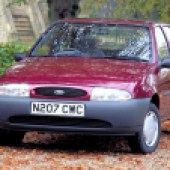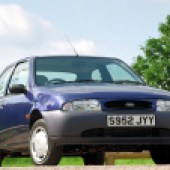The Ford Fiesta Mk3 was a great supermini that blossomed into the bestselling Mk4 of 1995. Today, it’s an affordable starter classic
Words: Dan Williamson
The original Ford Fiesta arrived in 1976 as a rival to the Fiat 127 before gradually piling on the pounds, from the big-bumpered facelift of 1983 (commonly known as the Mk2) into the third generation of 1989. By the end of the 1980s, superminis were all the rage – and it was the Ford Fiesta that ruled the roost alongside its largely French and Italian counterparts. On a completely fresh platform, the Mk3 Fiesta was refined with much-improved suspension, and a wheelbase extended by over six inches– making it finally available as a five-door hatch alongside the traditional three-door. The Fiesta could finally compete with the Fiat Uno and Peugeot 205 as a ‘grown up’ supermini.
The Fiesta Mk3 had a cabin that felt more spacious, although Ford stuck to cheap interior plastics and audaciously low-rent injection-moulded seats. Still, it was a refreshingly modern environment, and Ford’s tactic of giving just enough spec for the money attracted plenty of buyers. Entry-level Mk3s featured a 1.0 HCS engine with four-speed gearbox; it was painfully slow, yet less economical than the 1.1-litre version with a five-speed transmission. More impressively, the 1.8 diesel offered 70mpg, if you could stomach the coarseness and heavy steering. Higher specs brought better equipment and CVH engines – a 1.4 or (in the Fiesta S) carb-fed 1.6.
The XR2i arrived next, featuring a 1.6 CVH engine with electronic fuel-injection and colour-coded body kit, joined in 1990 by what classic Ford fans consider the best-ever Fiesta: the RS Turbo, which topped 129mph. Both offered front-drive fun, but couldn’t keep pace with the multi-valve engines of Japanese competition. Ford finally introduced its excellent Zetec 16-valve engine in 1992, powering the later XR2i and RS1800; numb steering meant neither could compete with superior-handling hot hatches, and so with crippling insurance making such cars an increasingly hard sell, overtly-sporting Fiestas were axed. Instead, a more subdued Si model was introduced in 1.4 or 1.6 Zetec guise.
The Fiesta was re-engineered in 1994, featuring a stiffer bodyshell, side-impact beams and revised suspension; today known as the Mk3.5, this revamp is recognised by slimmer door mirrors. The improvements carried over to the Fiesta Mk4 of October 1995; along with trim upgrades and a new fascia was a Yamaha-developed Zetec-SE in 1.25- or 1.4-litre form. Nobody moaned about the Mk4’s glum-looking face because the terrific powerplants were mated to a fantastic chassis.
Fiestas hit the top of the UK sales charts, and ranked high until replaced by the Mk5 of October 1999. Meanwhile, the Fiesta Mk3 continued as the Fiesta Classic (until 1997), plus the badge-engineered Mazda 121. What’s more, many of the earlier Fiesta’s underpinnings and oily bits continued into 21st century Fords. And it’s those similarities that make the Mk3 and Mk4 so usable. Modern practicalities, great fuel economy, cheap parts and unlimited upgradability mix with retro-cool appeal to make the Fiesta a perfect everyday classic.
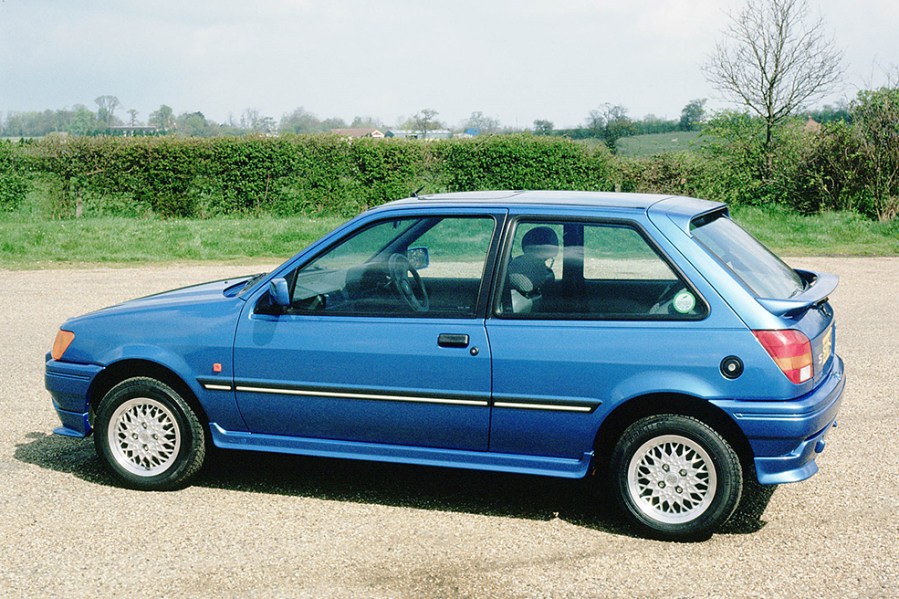
Bodywork
Rust is the eternal enemy of old Fords and that’s certainly the case with the Fiesta Mk3. Although the Mk3.5 and Mk4 Fiesta models tend to rot less than Mk3 examples, all can be turned to dust if they have not been properly cared for over the years.
Cosmetic corrosion is easy to spot around the rear wheelarches, rear quarters (where they meet the back panel/rear lights), front wings, tailgate and door frames, particularly under the rubber seals. The Mk3 has a locking fuel cap, around which the steelwork rots away entirely, taking with it the pipework underneath; later cars have a fuel flap, with less tendency to rot.
Examine the engine bay beneath the fuse box (which itself can cause trouble due to corrosion), battery tray, inner wings around the bulkhead and crossmember. Look for rust around the windscreen scuttle, A-pillars and outer sills.
Check the inner sills and front floorpan. And don’t be afraid to lift the carpet to inspect the seat mountings; if the carpet’s damp, suspect leaks from the bulkhead or sunroof, and expect the floor to be corroded. Have a good look underneath, and inspect the boot floor, rear suspension turrets and outer valance.
Body panels are available, so restoration isn’t prohibitive – but only on a sporty XR or RS will it be financially viable. In which case, ensure the body kit is complete, because skirts and wheelarch extensions are getting hard to find.
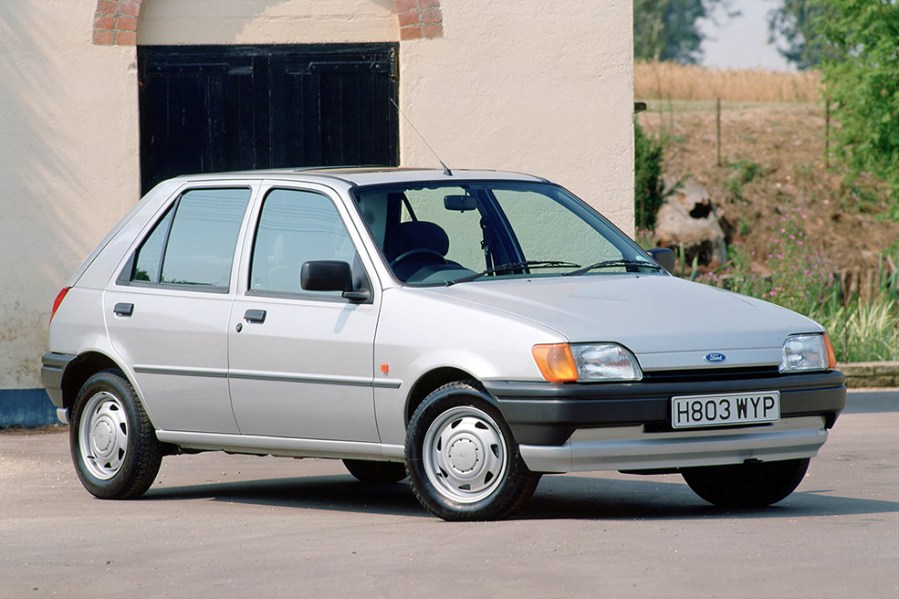
Engine and transmission
Ford Fiesta engines range from ancient to contemporary, so your choice of Fiesta Mk3 has massive impact on refinement, performance and reliability. Basic Mk3 models were fitted with an HCS (High Compression Swirl) engine – a derivative of the Valencia, which was a low-rent development of the old Crossflow – in 999cc, 1118cc or 1297cc form. All were rattly, unrefined and unlikely to hit high mileage. By now, expect an HCS to be worn out, probably smoking, losing oil and knocking from the bottom end; valve stem oil seals and piston rings are common problems.
Excessive tapping from an HCS engine suggests the valve clearances need adjusting (easy enough for a competent DIY enthusiast), or that new cam followers or valves are required. This unit continued in the Ford Ka until 2002, so replacement and rebuild components are cheap and easy to come by.
CVH engines were used in 1392cc and 1596cc guise, the latter in carb-fed, fuel-injected and turbocharged set-ups. Although it was a more sophisticated (overhead-cam) powerplant than the HCS, it was harsh and susceptible to wear from around 60,000 miles. Noisy tappets and camshaft rattling is typical, but listen for heavier growling from the crank, and check it’s not breathing from the oil filler – often caused by air blowing past the piston rings, but could also be from a blocked breather. Ensure the cambelt has been replaced recently; if not, ensure it’s swapped ASAP.
Diesel-powered Fiestas used Ford’s 1753cc Endura-D, which was tough but painfully lethargic and heavy to steer. They go on forever, getting gradually slower, noisier and smokier. If it’s a non-runner, struggling to start or misfiring heavily, just find a different Fiesta.
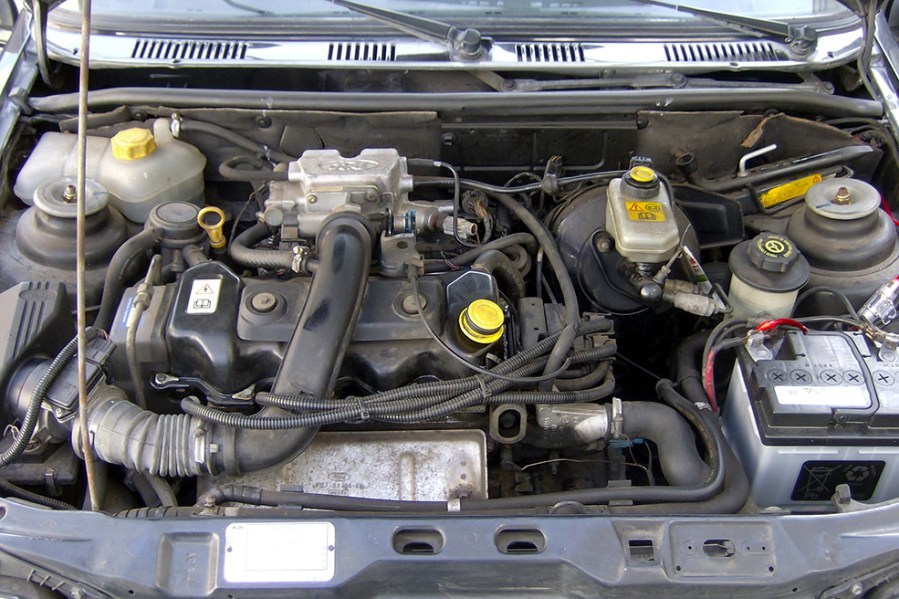
Zetec and Zetec SE-engined machines are a much better proposition, being quieter, more refined and economical. They’ll also cover very high mileage without issues providing oil changes and cambelt swaps are made regularly. Major failure is uncommon but walk away if there’s blue exhaust smoke or the bottom end is overly noisy; if the oil has been neglected or allowed to run low, it could mean serious problems. Make sure it revs freely without smoking once warm. More likely will be stalling, erratic idling and fluctuating revs – typically caused by sensors, idle speed control valve or coil pack (depending on model). Parts are cheap, although diagnostics can be time-consuming.
Basic Mk3 1.0s (and some 1.1s) were fitted with a BC four-speed manual gearbox, which is best avoided. Fortunately, it’s straightforward to swap for the five-speed BC5, as found in most Mk3s. A revised version – known as the iB5 – was in the Mk4. Both types are plentiful, reasonably reliable and cheap to replace or repair.
The BC5’s gearchange is typically vague but the iB5’s should be slick. Any sloppiness suggests a tired linkage but crunching between gears (especially second to third) is most likely a worn synchromesh (a rebuild or replacement gearbox is required). Difficulty selecting gears could be due to broken teeth on the (plastic) clutch self-adjusting ratchet; listen for clicking when lifting the pedal. Rattling at idle that disappears when you press the clutch suggests a faulty clutch release bearing. Clutch failure is common, so beware of a low biting point, and check for slip by setting off in second gear and ensuring the engine stalls.
Run away from any grumbling or whining from the transmission, especially on fifth gear or from the driveshafts; if the speedometer drive isn’t working, start to worry. Juddering when pulling away could be a tired gearbox mount; clicking on full steering lock is most likely a worn CV joint. Both are easy to fix. CTX continuously variable automatic transmission was offered on the Fiesta 1.1, 1.3 and 1.4, but it’s unpleasant to use and suffers from oil leaks. It was typically ordered by old folk on high-specced cars, so survivors are quite common; the best option is to replace it with a five-speed manual.
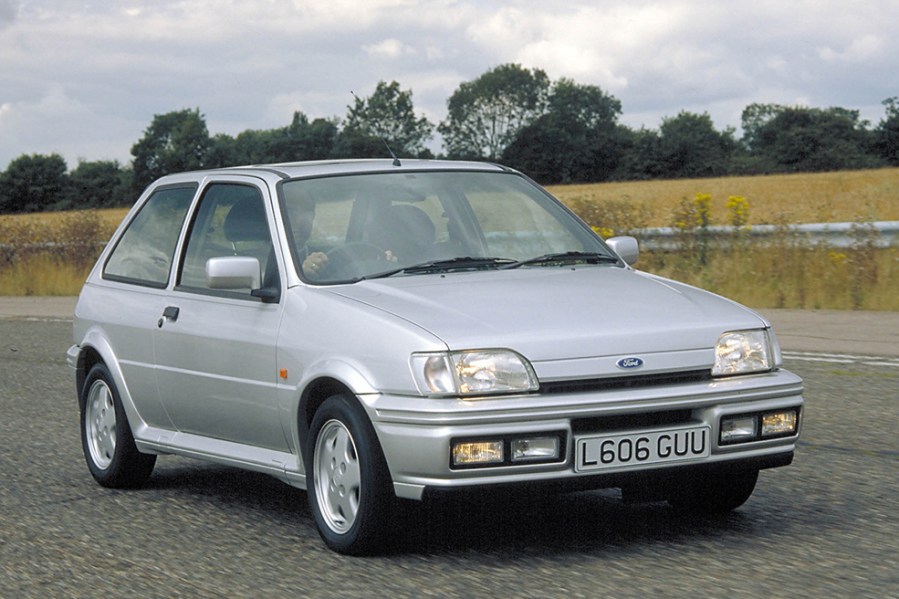
Suspension, steering and brakes
Fiesta Mk3s suffered from stodgy handling, but the Mk3.5 introduced improvements, and the Mk4 became known for driving enjoyment; indeed, the Mk4’s platform was used as a basis for the much-lauded Ford Puma of 1997. All versions are easy to work on, and parts are cheaply available.
Tired springs and dampers result in sogginess on the road, while worn-out bushes cause wandering – also a symptom of play in the steering rack or track rod ends. If the steering wheel can be pulled upwards, the column bush will be to blame. Listen for clonking from the front, probably caused by broken drop links and/or lower suspension arms; check the strut top mounts and look for snapped springs. Fiestas eat wheel bearings, so listen for rumbling, and give the wheels a wobble.
Juddering through the brake pedal is a common sign that the front discs and pads are worn or overheated but could also point to a sticking caliper – especially if pulling to one side. All are cheap and easy to replace. Rear drums tend to seize or stop working on the handbrake mechanism (often due to leaking wheel cylinders), and rear bias valves also stick, causing excessive braking to one end of the car. ABS (where fitted) can be problematic, so ensure the dashboard light comes on with the ignition and goes off after a few seconds.
Many later models were equipped with power-assisted steering, which makes life easier for town driving and is well worth looking out for.
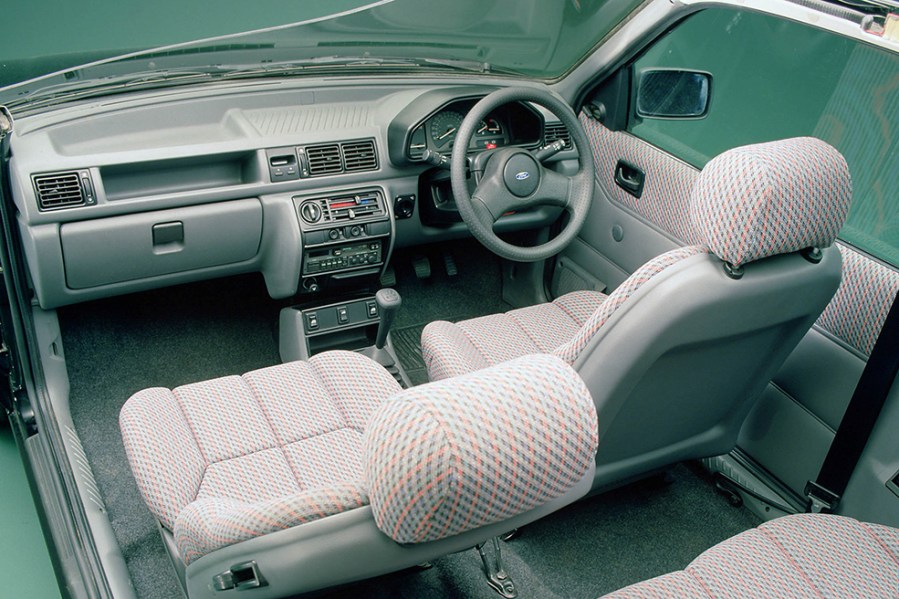
Interior and trim
Better than a Mk2 but still a sea of plastic, the Fiesta Mk3’s cabin – and even the Mk4’s much-improved fascia – is likely to be tatty if the car’s covered a lot of miles. Even a less-used example will be rattling from the dashboard and trim panels, and many types of fabric upholstery stain easily. Seat bolsters wear through, bases collapse and door cards become saggy. Despite millions of Fiestas being built, the wide variety of trim levels can make it tricky to find mint-condition replacements for your particular car.
Ensure all of the electrical items (where fitted) work correctly: electric windows, central locking and boot release motors and connections can become sticky or worn out. Pay attention to the heater and ensure it’s not blowing out only hot air but can actually be turned down. Non-cancelling indicators are caused by a defective column stalk, and if the fog light switch (on sporty models) glows with the ignition on, it’s a wiring loom fault.
Drop the fusebox and examine the wiring, which is prone to failure, and make sure it’s not been bodged back together. Electrical problems are common, often due to a corroded connector or bad earth. If the car has a sunroof, check for leaks and stains on the headlining and carpets.
Ford Fiesta Mk3: our verdict
The Ford Fiesta Mk3 and its Mk4 successor may look too modern for many classic enthusiasts, yet they fill the role of a usable classic in much the same way as Minis and Morris Minors of yesteryear. A Fiesta is the perfect beginner’s classic, being affordable, accessible, easy to work on and – dare we say it – susceptible to almost every type of malady for the DIY restorer to learn new spannering skills from.
As usual, the Blue Oval badge gives bonus points for cool kids, and any form of sporting Ford can be tuned for great driver appeal – not to mention turning heads at car shows, while appreciating more than money in a pension scheme. An XR or RS is most desirable, of course, and at current prices has serious investment potential.
That aside, our money would be spent on a late-model XR2i 16-valve (for its smooth and reliable Zetec engine) or a Mk3.5 Si 1.6, which boasted funky wing-backed seats and power steering – a major plus point for an everyday starter-classic.
The Fiesta Mk3/4 bucks the trend for high-value old Fords. Prices are currently behind the average Blue Oval classic, and even the sportiest models are a fraction of their Mk1 and Mk2 counterparts. Take the XR2i as a case in point: a usable example can be purchased for well under £5000, yet you’d need three times more for a Mk1 XR2. The RS Turbo is similar, fetching little more than half the price of its Escort equivalents. Beware, however: fakes and replicas are common.
At the opposite end of the scale, base-model Mk3/4s can be picked up for less, although values are showing signs of rising for the very best examples. Around £2000 should bag a tidy Fiesta with decent spec and usability (such as a 1.4 Ghia), with prices climbing with lower mileage and better condition.

